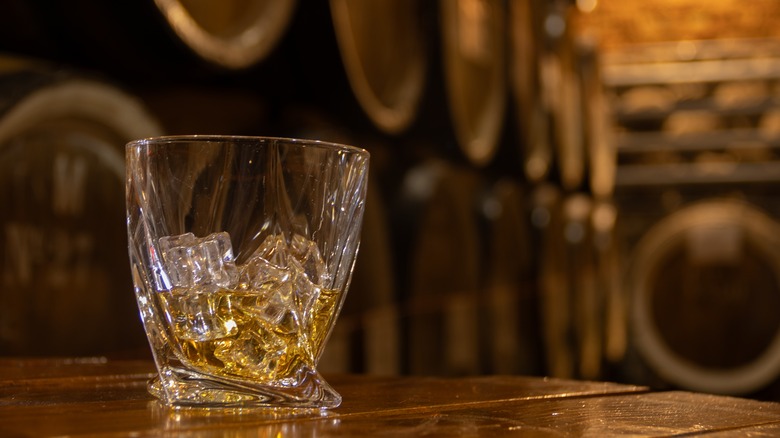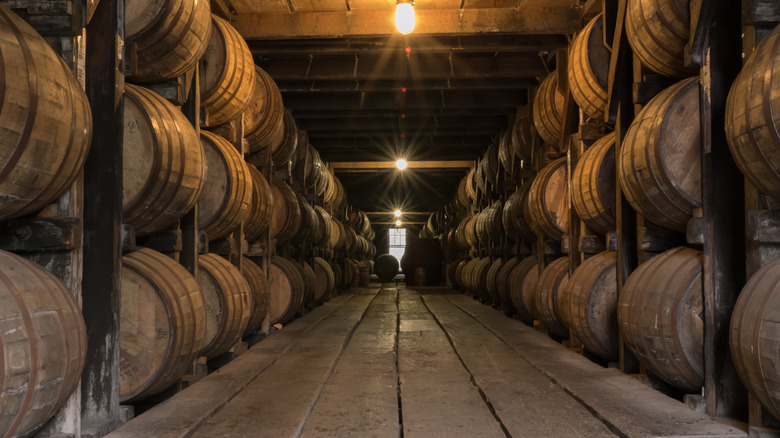The Reason Whiskey Has Aging Laws
Have you ever studied the labels of your whiskey bottles and wondered what "bottled-in-bond" means, or why some have the designation of "Kentucky straight bourbon" while others don't? These phrases actually hold a significant amount of legal weight. Notably, their presence on a bottle means the distillery underwent specific steps to ensure each one is a safe, quality product.
All types of whiskey have strict aging laws dating back to the 19th century. Back then, spirits weren't heavily regulated, so some questionable products ended up on the market. Before the U.S. government passed the Bottled-in-Bond Act of 1897, some whiskey merchants would dilute or add chemicals to their subpar product to make the color or taste more appealing. Aging laws not only protect the consumer from drinking something potentially harmful but also preserve the integrity of the beverage.
After the Bottled-in-Bond Act became law, distillers had to comply with strict standards in order to label their whiskey as "bonded" or "bottled in bond." This law mandates that the drink is made by one distiller at one location during the same distilling season — January to July is the spring, while July to December is the fall. The whiskey must also be aged in a wooden barrel for at least four years and be bottled at 100 proof. The product label must disclose both the distillery and bottling location. Some whiskeys do not age for the entire four years, and these must have an age statement on the bottle and can't carry the "bottled in bond" status.
Laws vary based on the type of whiskey
Different countries and different types of whiskey have varying aging standards they must meet, but all must be aged in a wooden vessel. For example, one of the major differences between whiskey and bourbon is that to legally be considered bourbon, it must be aged for a minimum of two years in a new, charred oak barrel. Other types of whiskey can be aged in an oak barrel that has been used before, so bourbon distilleries will often sell their used barrels to distilleries of other kinds of whiskeys. If a bourbon wants to also be considered "bottled in bond," then it must age for at least four years (and meet all the other requirements), otherwise it is labeled as "straight bourbon whiskey."
While Kentucky is considered the bourbon capital of the U.S., there are many other subsets of the drink made in different parts of the world, such as rye and scotch, and they each have their own laws pertaining to ingredients and aging. While bourbon must be at least 51 percent corn, rye whiskey must be at least 51 percent rye grain. Like bourbon, rye whiskey must also be aged in a new, charred oak barrel for at least two years. Scotch must contain only three ingredients: water, yeast, and grain, and it must be both distilled and aged in Scotland for a minimum of three years. These aging laws may seem trivial to some, but they ultimately keep consumers safe and hold distillers to a high standard to produce quality products.

